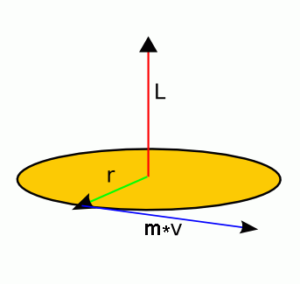Table of Contents

Dimensions of a physical quantity are the powers to which the fundamental units, unrelated units of measurement, are raised to obtain one unit of that quantity. Dimensional formulas have been frequently defined as the expression indicating the powers to which the fundamental units must be raised to obtain one unit of a derived quantity.
Linear momentum has been calculated by multiplying the system’s mass by its velocity. We must understand that a large, fast-moving object will have more momentum than a small, slow-moving object. It’s written as p = mv. This means it is directly proportional to the object’s mass and velocity. When an object’s mass or velocity is greater, its momentum is also greater.
Any object whose momentum amount does not change exhibits linear momentum conservation. Such a quantity is a vector quantity with the same direction as the object’s velocity. Like the concept of energy, one such quantity was crucial to the development of classical physics. Because of its significance, it was dubbed ‘quantity of motion.’
Newton established the second law of motion based on momentum. He reported that the total external force is equal to the change in momentum in the system divided by the time it takes for the change to occur.
The momentum of any particle collection is equal to the vector sum of the individual momenta. Newton’s third law asserts that particles exert equal and opposite forces on one another, so any change in momentum of one particle is precisely balanced by an equal and opposite change in momentum of another particle.
Thereby, in the absence of a net external force acting on a group of particles, their total momentum remains constant; this is what the law of conservation of momentum means. Several people confuse momentum and kinetic energy.
They both are associated with the velocity (or speed) and mass of an object, but momentum is a vector quantity that describes the amount of mass in motion. Kinetic energy is a scalar measure of an object’s energy from motion.
Dimension of Momentum Formula
The dimensional formula of momentum can be represented as:
[M1 L1 T-1]
Here,
M = Mass
L = Length
T = Time
Derivation of Dimension of Momentum:
We have, Momentum (M) = Mass × Velocity . . . . . (1)
Now, the dimensional formula of velocity = [M0 L1 T-1] . . . . (2)
Similarly, the dimensional formula of mass = [M1 L0 T0] . . . . (3)
When substituting equation (2) and (3) in equation (1) we get,
Momentum = Mass × Velocity or M = [M1 L0 T0] × [M0 L1 T-1] = [M1 L1 T-1]
Thus, Dimensions of Momentum is represented as [M1 L1 T-1].
Significance of Dimension of Momentum in IIT JEE exam
It is critical to take a holistic approach to every facet of a subject’s chapter. It will not only adequately prepare you for the exam, but will also clarify your understanding of each topic. It will help you in IIT preparation and answer conceptual problems in the exam. The number of questions from the chapter unit and dimensions would be one or two, with a weightage of roughly four marks.
FAQs
.” image-1=”” count=”2″ html=”true” css_class=””]Infinity Learn App
Now you can find answers to all your subject queries & prepare for your Exams on our Educational App – Infinity Learn.



